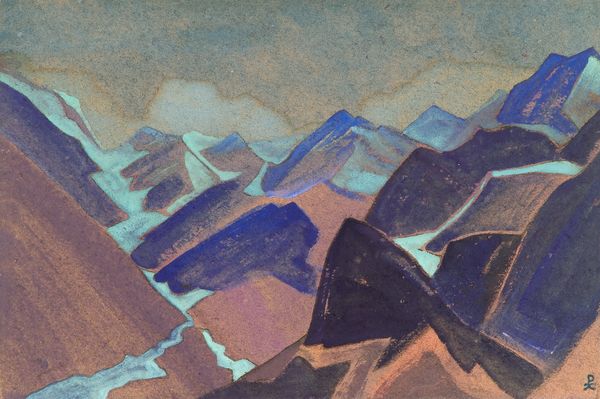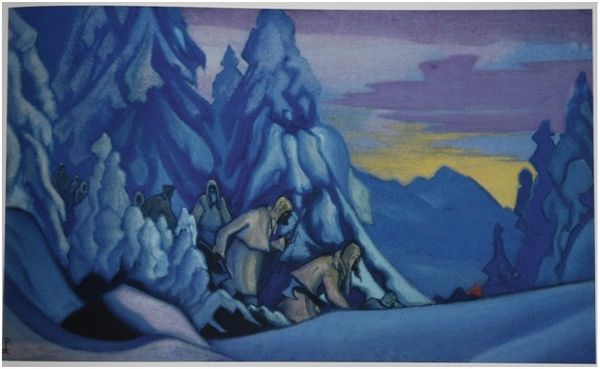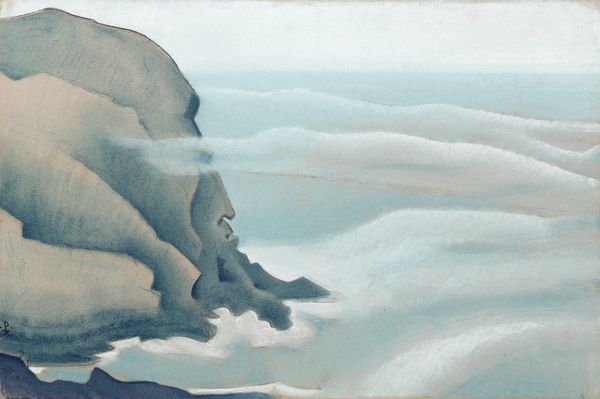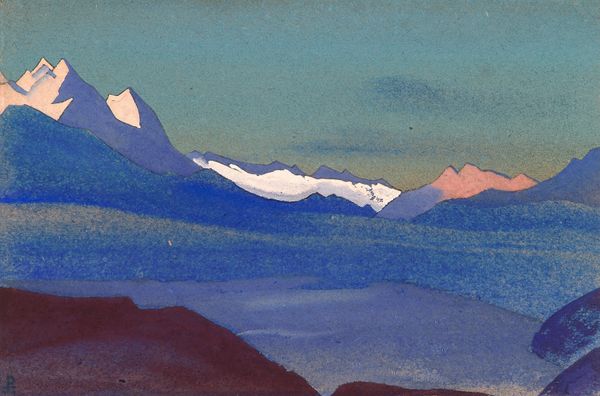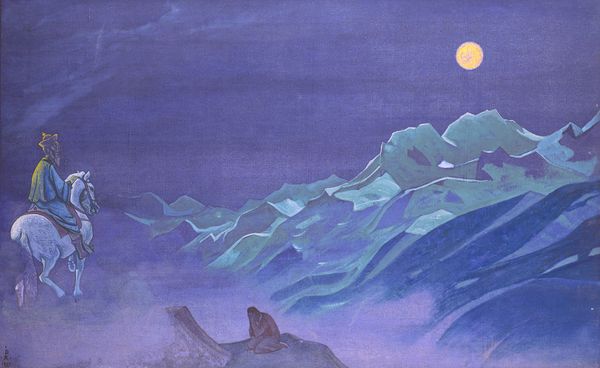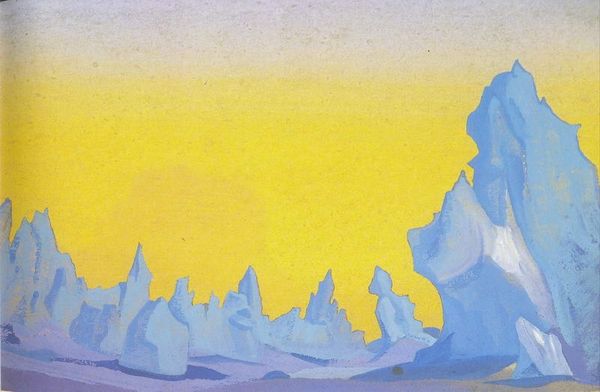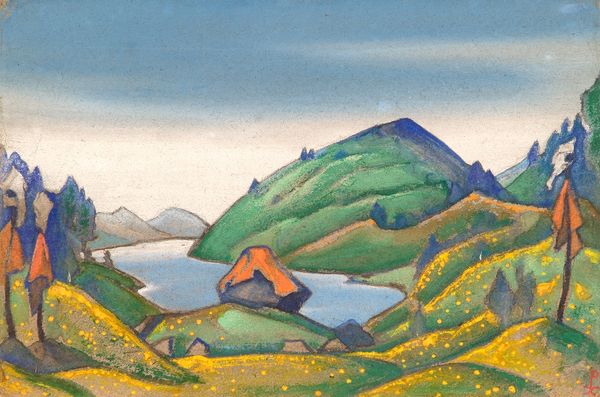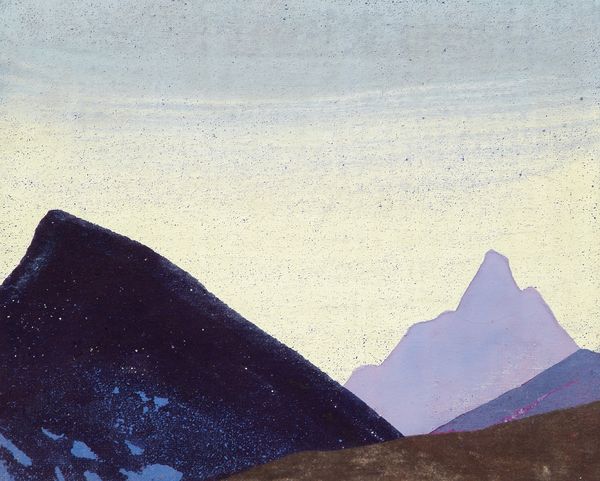
Dimensions: 51.5 x 76 cm
Copyright: Public domain
Editor: This is "Guardians of the Snow," painted in 1922 by Nicholas Roerich, using oil paint. The blues are striking; the whole scene is cast in cool tones. It’s so... still. Almost forbidding. What do you see in this piece? Curator: Well, beyond the obvious stylistic nods to Symbolism and Romanticism, Roerich was deeply invested in Theosophy. Paintings like these weren't just landscapes; they were intended as spiritual pronouncements. Consider the historical context: post-WWI disillusionment fueled interest in esoteric spirituality, seeking meaning beyond the material. Roerich presented landscapes invested with a deeper, perhaps mystical national identity. Editor: Mystical national identity... How does that manifest itself here? Is it about claiming territory? Curator: Not just claiming, but sanctifying. Roerich was intimately connected to Russian cultural nationalism; he presented the land as inherently spiritual, untouched by modern corruption. These "guardians," as he calls them, become symbols of ancient wisdom, a link to a purer past. Note the stylized, almost iconic presentation. This wasn't about representing a realistic place; it's about conjuring a spiritual ideal. Consider his museum work – didn't this interest in 'sacred sites' transfer into how places get represented and memorialized, or even politicized? Editor: That's a fascinating point. It makes me think about how even landscapes can be loaded with ideological meaning, and not just about pretty scenery. Curator: Exactly! Art rarely exists in a vacuum. Looking at Roerich's work through a historical and cultural lens helps us understand the power dynamics at play, even in seemingly peaceful landscapes. Editor: I see this painting so differently now. Thank you for opening my eyes to the socio-political context of something that at first glance seems purely aesthetic.
Comments
No comments
Be the first to comment and join the conversation on the ultimate creative platform.
